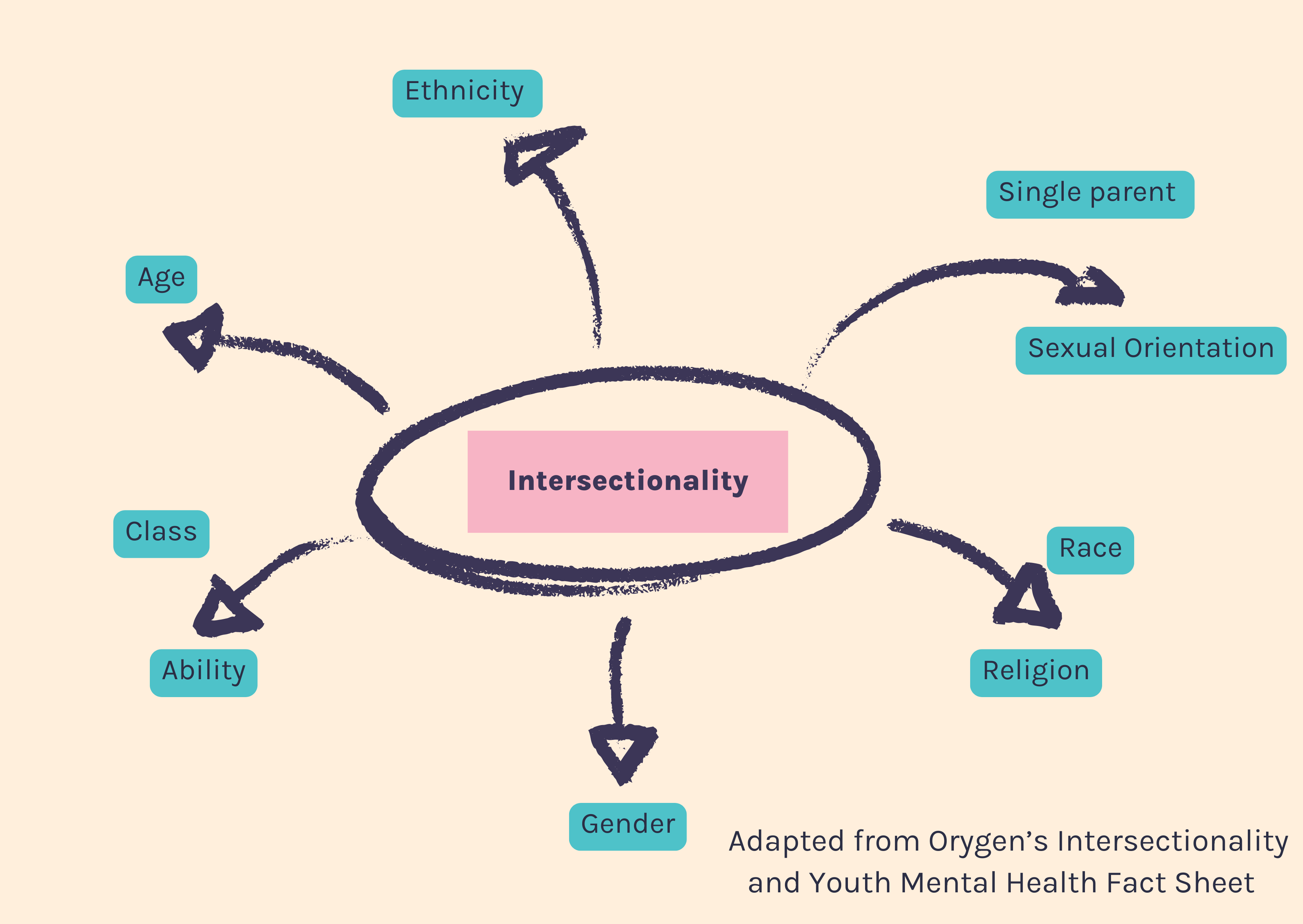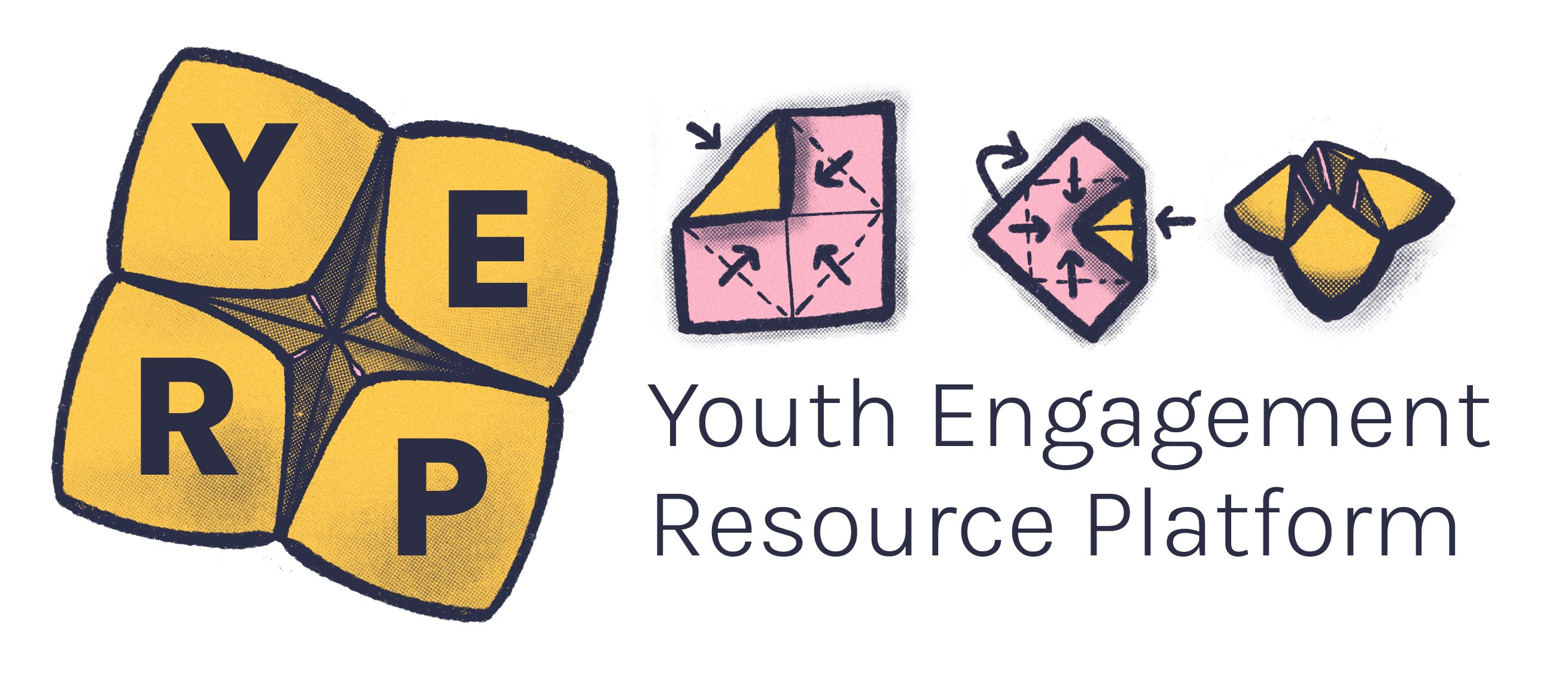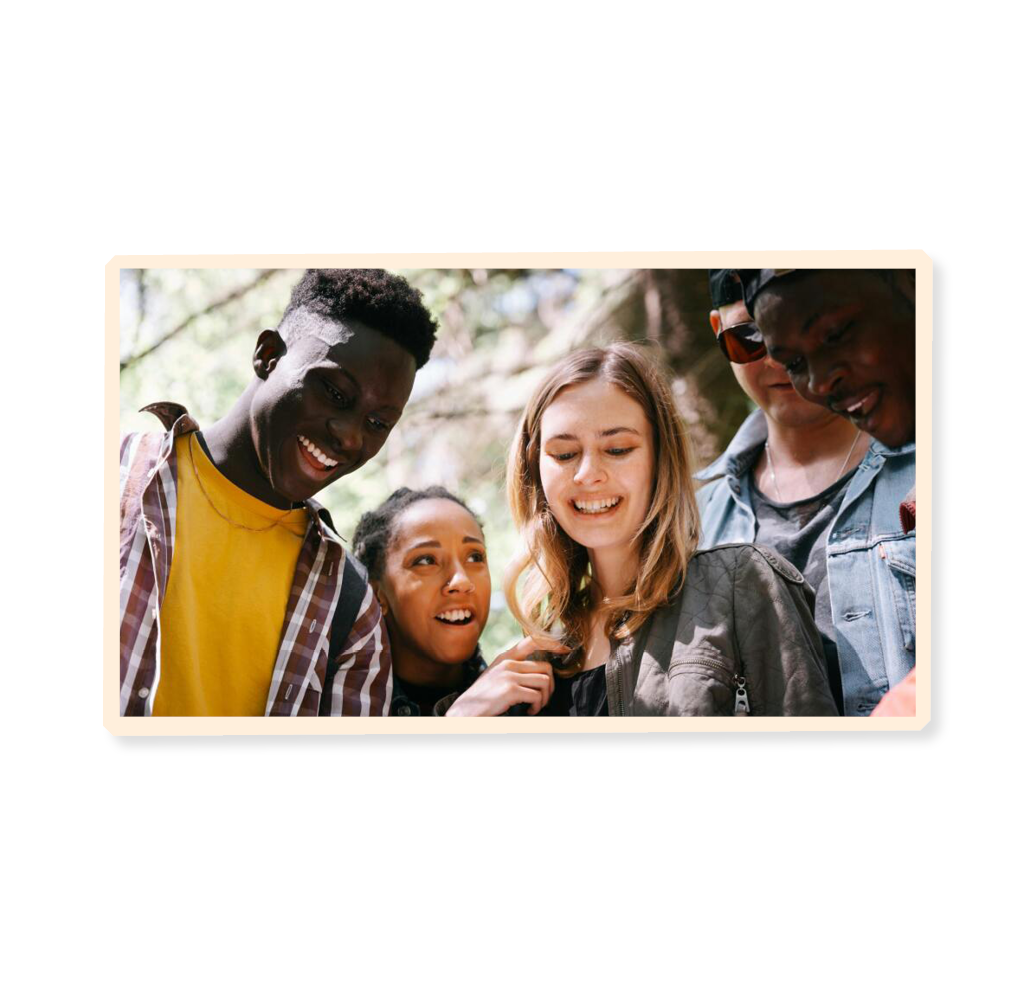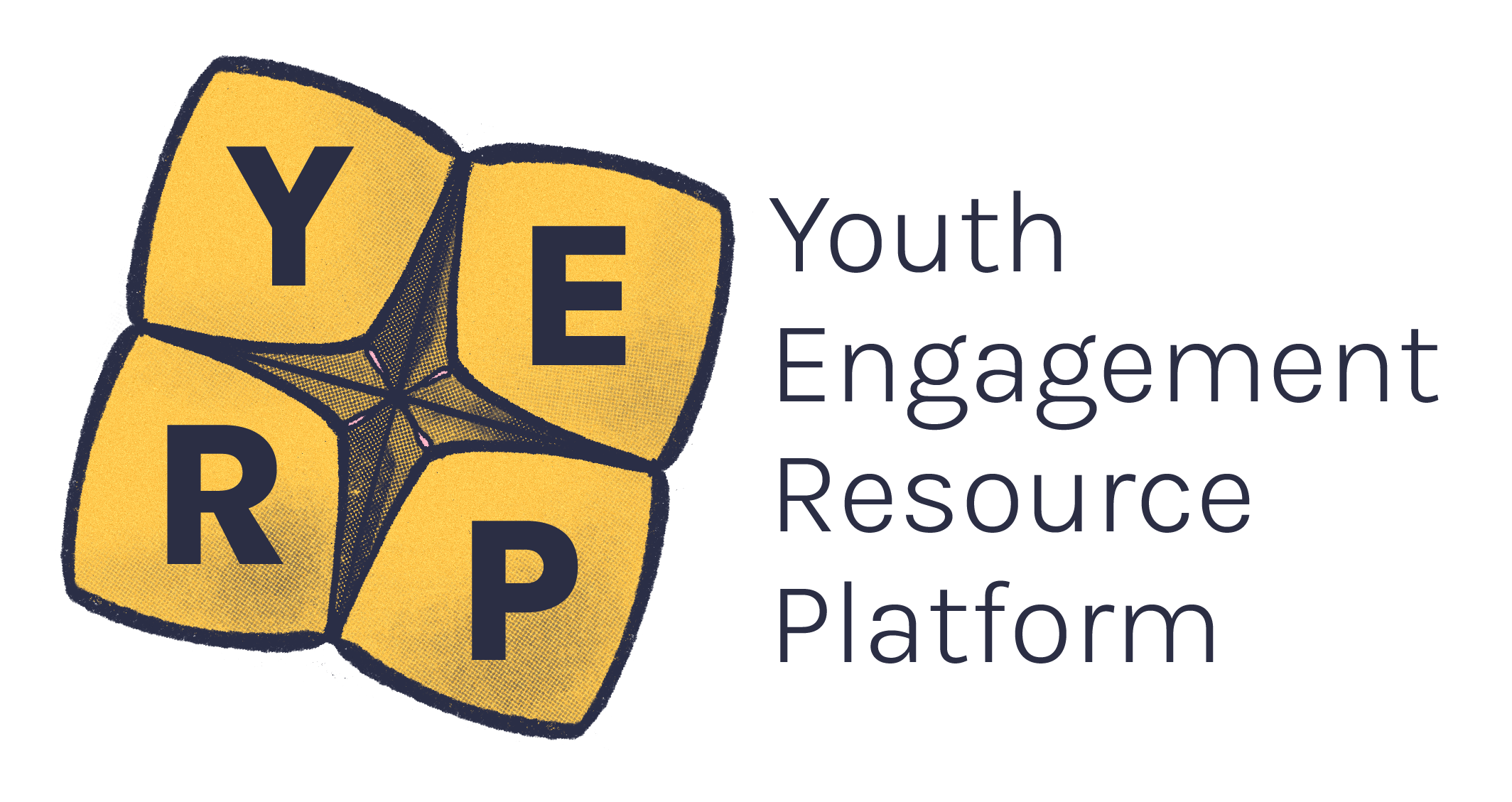Intersectionality is a framework for understanding how social and political aspects of identity such as race, gender, sexuality, class, and disability intersect and interact with each other to create unique and complex forms of privilege and oppression.1
Intersectionality acknowledges a person in a holistic way, moving beyond identity labels, to think about how their experiences are played out inside systems that structurally oppress and undermine them.1
The term intersectionality was brought about by Professor Kimberlé Crenshaw in 1989. She says, “intersectionality is just a metaphor for understanding the ways that multiple forms of inequality or disadvantage sometimes compound themselves, and they create obstacles that are not often understood within conventional ways of thinking.”2
Beyond the individual, engaging with an intersectional approach enables us to understand how to make services and spaces accessible to young people with a range of overlapping identities.
For LGBTIQA+ young people who come from a migrant and refugee background, it can be challenging to manage the complexities that come with having multiple intersecting identities.
For some young people, this can result in experiencing discomfort with services that only see one part of their identity. For example, a service that offers support to a young person with a migrant background, might not see that they face additional marginality and discrimination due to their experiences as a trans person. This young person might only feel supported in one facet of their identity and feel like they can’t share other aspects of their lived experience.
Anjali
I'm not just a young person
Kano
I'm not just Indian
Jess
I'm not just disabled
Emily
I'm not just a youth worker
Vera
I'm not just Aboriginal
All
But we are more than what we look like.
Kano
People are more than what they look like or their physical appearance. For example, I look Indian and I'm a male but most people don't assume that English is actually my third language and that I've had mental health difficulties in the past before.
Anjali
It's important to acknowledge the interconnectedness of people's social characteristics, as well as being aware of the various inequalities that young people may face and ways to best support them.
[Upbeat music]...
Emily
but I'm also neurodivergent.
Vera
I'm also a creative artist.
Jess
I also love cute things.
Vera
We are all so much more than how we appear to others. By looking inwards and understanding ourselves, we can empower young people on their journey to do the same. So next time you work with the young person, continue to reflect on yourself, your growth and your knowledge.
[Upbeat music]
- Young people are often beginning to grapple with their different identities and learning about how they interact and intersect.
- They may have faced or are beginning to experience oppression and marginalisation due to the inequities that are a result of systemic oppression and society’s views and understanding of certain identities.
- They may need help navigating these experiences and be supported to explore their identities from a strengths-based perspective in safe and supportive environments.
Intersectionality within a youth work context also means recognising that young people are marginalised simply due to their age. Young people often suffer prejudice from adults in their life, from the services they access and from the systems they live within. Young people under 18 are disenfranchised and all young people are regularly excluded by politicians and policy makers and left out of other social decision-making processes.3
Check out this video to hear more about intersectionality from our young co-designers Kano, Emily, Vera, Jess, Jacob and Anjali.
Having privilege means that you have an unearned advantage in society through some aspect of your identity, and there are others who don’t have this particular privilege.1
Power refers to the amount of control and choice you have over your life and how those choices impact and influence others.4 Be aware of your privileges, personal power and the imbalances that may occur when working with young people and how these can intersect.
For example, if you’re a white person, you have The unfair advantages and benefits that white people receive in society simply because of their skin colour.white privilege that a person of colour does not have. If you’re able-bodied, you have The unearned advantages that able-bodied people experience that disabled people don't.able-bodied privilege that someone from the disabled community doesn’t have.
By acknowledging your privilege and power and how power and privilege work to marginalise young people, you can support young people to challenge and address the marginalisation they face.
To understand the framework and history of intersectionality and to learn about how you can practice within an intersectional lens, download Orygen’s extensive fact sheet: Intersectionality and Youth Mental Health Fact Sheet.
This image shows that the intersection of someone’s identity can include:
- Ethnicity
- Age
- Single parent
- Race
- Class
- Sexual Orientation
- Religion
- Gender
- Ability
At the centre is intersectionality.
There is a cream background with black arrows and pink and blue boxes.
First line reads: Ethnicity
Second line reads: Single parent
Third line reads: Age, sexual orientation
Fourth line reads: Class, race
Fifth line reads: Ability, religion
Sixth line reads: Gender
In the middle of the diagram is a circle with a box that reads: Intersectionality

-
What are the individual factors that impact your life? For example, think about your gender, sexuality, ability, class and culture.
-
Have there been times when the impacts of these identities have crossed over and interacted?
-
What happens when they do? Do they impact your ability to access the things you need? How do they impact your access to services or support?
- When have your identities or beliefs aligned with the dominant culture?
- When has your membership in a certain group or subculture provided you with better opportunities or allowed you to enter certain spaces?
- For example, having a university degree often gives someone access to higher paid jobs
- What are my views and beliefs about my own culture, gender, ability and class?
- What do I think or believe about other cultures, genders and abilities?
- What do I know about different cultures, disabilities, genders, sexualities, race and classes and where did I get that knowledge from?
- What do I learn from the diverse young people I work with?
- How can I adapt my language and practice to support the young people I work with in a holistic and intersectional way?
- In what ways can I acknowledge and work to dismantle some of the power imbalances between myself and the young people I work with?
Arya and Fatima openly discuss the different aspects of their identity and how much value they find in recognising and being supported in their intersectional identities. Together they explore intersectionality, communication and empathy, and advocacy and support.
We really encourage you to read through Orygen’s fact sheet on intersectionality.6 There is a great case study on page 7. Have a read, reflect, and then respond to the questions. This will give you a chance to practice using an intersectional approach. Please note, this case study has brief mentions of transphobia and indirect racism.
- Jagoo, K. (23 January 2023). How to Navigate Your Own Privilege. Verywell Mind. https://www.verywellmind.com/how-to-navigate-your-own-privilege-5076057
- Amnesty International. (1 December 2021). Explainer: Why intersectionality is important for women’s rights. https://www.amnesty.org.au/explainer-why-intersectionality-is-important-for-womens-rights/
- Corney, T., Cooper, T., Shier, H., Williamson, H., (6 December 2021). Youth participation: Adultism, human rights and professional youthwork. Children and Society. 36, 677–690.https://onlinelibrary.wiley.com/doi/full/10.1111/chso.12526
- Carfe, L., (17 November 2022). Power. [Video]. Youtube. https://lizscarfe.net/whats-power/
- Orygen. (2021). Fact sheet: Intersectionality and youth mental health. https://www.orygen.org.au/Training/Resources/trans-and-gender-diverse-young-people/Fact-sheets/Intersectionality-and-youth-mental-health/orygen_fact_sheet_intersectionality_and_ymh-pdf.aspx?ext=





